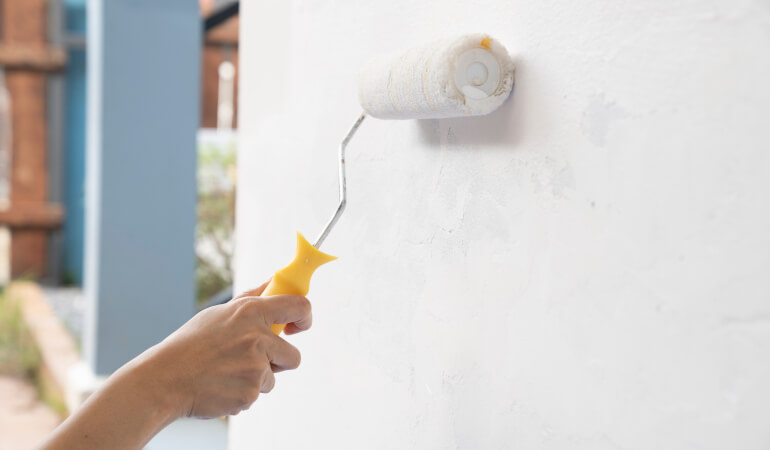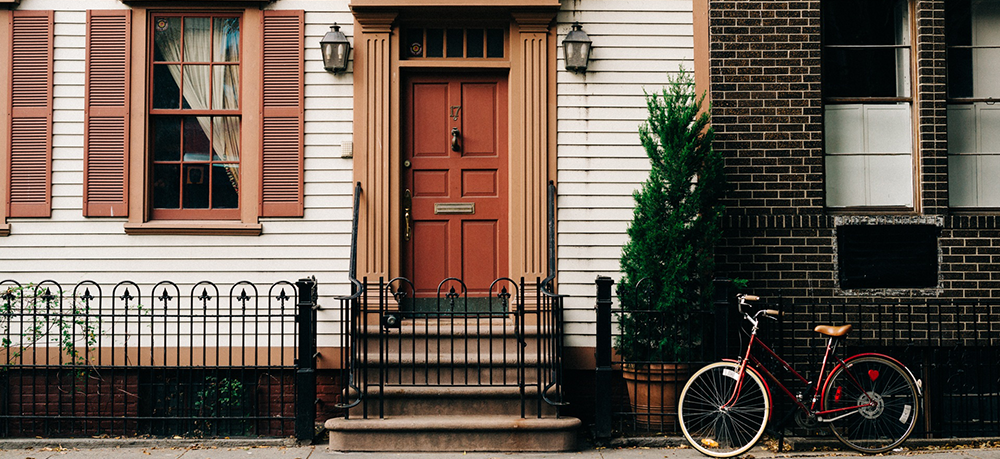
Mould in your home is not just visually unappealing, but can also trigger health issues. There are many reasons why it may appear on the walls or ceilings, but dealing with it is a complex task that requires not only treating the mould but also finding the core reason for it.
Table of Contents
Why do walls and ceilings often become mouldy?
Mould appears in places with excess moisture. Inside the house, that’s usually the bathroom and kitchen, but it can also affect damp areas with low ventilation like the basement, attic or garage. The reasons to start forming on your home’s exterior could be quite a lot. Most often it’s a result of faulty drainage or pipework, cracked brickwork, and overly porous walls absorbing rainfall. Exterior mould can also show up on wooden fences and masonry.
Mould can be a serious problem in your household during the winter because the lower temperatures cause walls to accumulate excess moisture. The problem deepens if these areas also have poor ventilation. That’s why it is important to open the windows and let fresh air flow in whenever possible.
Difference between mould and mildew
Mould and mildew may seem similar, but in fact, they are different. Mildew usually looks powdery grey, white, or light brown, while the mould is black, dark green or red. Both of them have a distinctive odour.
Both mould and mildew can begin to grow on a damp surface within a few days. Mildew starts with small dots that spread on the surface. Mould can penetrate the surface and cause damage to your walls, ceilings, and other surfaces.
Mould-related health issues
Symptoms can vary from sneezing, dizziness, a runny nose, rashes, and red eyes to potentially worsening health issues like asthma attacks. Beyond impacting your health, mould can significantly affect the condition of your living space. Mould emits bad odour and can damage your property structure and furniture.
Check also:
Pros and Cons of Painting the Ceiling the Same Colour As the Walls
What is anti-mould paint?
Anti-mould paint contains biocides that target specific living organisms – in this case, mould and mildew fungi and prevent their growth.
The anti-mould paints can work effectively for around five years, even in areas with high humidity. Over time, the biocides break down and become less effective, so the paint should be reapplied.
Note: Anti-mould paints work on the mould issue but do not fix whatever’s causing the mould in the first place. It’s more about keeping that nasty black mould from spreading. Fixing the main cause remains the best way to stop black and other types of mould from coming back.
Does anti-mould paint actually work?
Anti-mould paint works if it’s applied correctly. It contains a strong fungicide designed to kill harmful fungi spores, thus preventing mould growth. Still, as we’ve already established, if you don’t treat the reason for the issue, the mould will appear soon after.
If there is condensation, pipe leak, poor ventilation, cracked tile or damaged insulation, you should handle the problem first, then prepare the walls by using some fungicidal product such as this paint. Only this way you can be sure the paint will do the job of protecting your home from further mould growth.
Most often, these types of paint are water-based and contain acrylic resin, which allows for better adhesion to a wide range of surfaces and moisture resistance. Also, they may contain latex to become waterproof. The addition of these ingredients also makes the product washable.
Check also:
Painting & Decorating KNOW-HOW: The Novice Guide to Paint like a PRO
Is anti-mould paint safe?
While anti-mould paints are generally non-toxic and safe to use, it is important to minimise exposure to the fumes during drying. Just to be on the safe side, you should keep the room well-ventilated until the paint is drying.
Nowadays, many brands offer anti-mould paint and you can even find organic products that are completely safe even for a child’s room. Make sure to read the label in detail, though, before buying the product you have in mind.
Still, if you have doubts about the exact components of the paint, just keep your four-legged friends and young children away from the newly painted room.
Where can I apply anti-mould paint?
The anti-mould paint is ideal for interior surfaces prone to high condensation levels. It can effectively be used in areas such as:
- Kitchens
- Bathrooms
- Finished basements and cellars
- Bedrooms
- Living rooms
- Utility rooms
To be sure that the product is applied correctly, just follow the manufactuer’s recommendations on the label or on their specific website. Keep in mind that some prepping of the surface will most likely be needed to make it completely smooth. This may include removing old paint or wallpaper and cleaning any existing mould.
Are there surfaces where anti-mould paint cannot be applied?
Anti mould paint can be applied to a wide range of surfaces, but you should check the paint’s specifications. Also, these paints may not be suitable for older or listed buildings that have a lime plaster build-up and need to breathe.
If you can’t determine for yourself, consulting with a professional London handyman or a specialist at a paint store is always an option.
Can you paint over anti-mould paint?
Yes, you can paint over anti-mould paint but this may stop the active chemicals from working. If you want to add the anti-mould effect to a specific shade or type of paint, you can use an anti-mould paint additive. This product contains specialised biocides and gives the same properties as an anti-mould paint. Once the coating is applied, the biocides start to work.
Mould-resistant paint is exceptionally durable and scrubbable, so you can clean your walls without fear of damaging it. If you see new mould patches, you can wash the affected surface with a mixture of household bleach and water (three parts water to one part bleach) or use a household cleanser designed to kill the fungi.
Check also:
How to Care for Paint Brushes After Use
How long does anti-mould paint last?
Over time, the effectiveness of the biocides in the anti-mould paint diminishes. Typically, anti-mould paints have a lifespan of approximately five years before requiring reapplication to maintain their efficacy.
The frequency of repainting depends on the damp levels. So to keep the paint effective in your bathroom, which maintains constant high levels of dampness, you will have to call a painter and decorator to reapply it more frequently.
Looking for a reliable painter close to you?
Enter your postcode to view our rates and availability in your area.
For questions about the services we offer visit our main site
Takeaways
- It’s essential to find and fix the issue causing the mould growth. Remember, painting over mould without addressing the cause is only a temporary fix.
- Anti-mould paint offers an effective solution due to the biocide ingredients. These paints are suitable for interior and exterior walls.
- Even though there is a wide range of anti-mould paints, ventilation during application is important.
- To maintain the effectiveness of the paint, it’s best to avoid painting over it with another type of product.
- Regular maintenance and reapplication of anti-mould paint every five years are necessary to sustain protection.
- High-moisture areas like bathrooms and kitchens may need to be repainted more often based on the manufacturer’s recommendations.




Nice blog, Thanks for guiding about anti mould paint which is good for our house or not. Thanks for sharing with us.
“Great article! The step-by-step guidance on choosing and applying anti-mould paint is super useful. I love how you explain not just the best products but also how to prevent mould from coming back. Definitely bookmarking this for future reference—thanks for the great tips!”